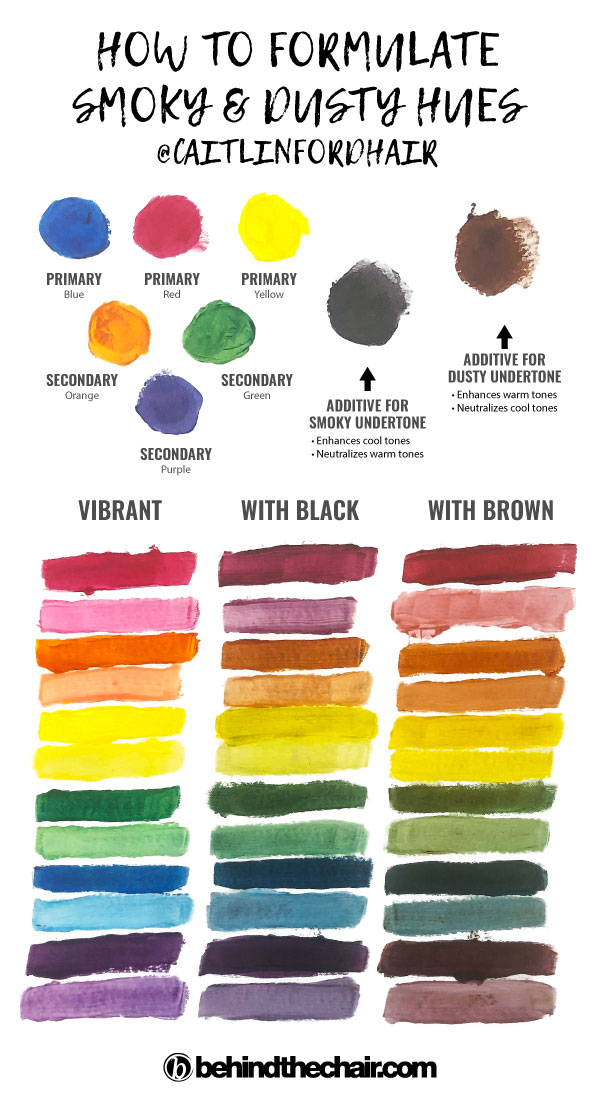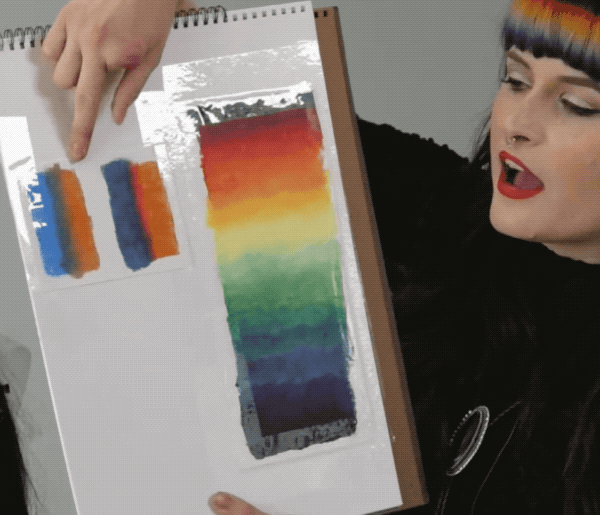Color Theory 101: Creative Color Edition
Color Theory 101: Creative Color Edition
Remember in cosmetology school learning color theory? Then remember when you actually started in the salon and needed to know MORE about color theory? Well, good thing for you, we had Creative Color Queen and BTC Team Member Caitlin Ford (@caitlinfordhair) break down how she uses color theory to create some of her iconic vibrant color blends. Seriously, you NEED to check out her Insta, just ask her 160k followers. So, grab your supplies ‘cuz we’re going back to school. Scroll down for a lesson and click here to purchase Caitlin’s entire class on BTC University.
Check out this before & after!


Changing Undertones: Smoky or Dusty
Give vibrant colors some attitude by mixing black or brown to add smokier or dustier results. Here’s what to know:
- Vibrant Direct Dye + Black
- Neutralizes warmth and enhances cooler undertones.
- Results in a smokier shade.
- Vibrant Direct Dye + Brown
- Neutralizes cool and enhances warmer undertones.
- Results in a dustier shade.
Pro Tip: If the direct dye line you prefer doesn’t include black or brown shades, Caitlin suggests mixing opposite undertones to create the desired color. For example, if you want to create a dusty rose shade, mix pink with green.

Adding White: Gradients and Softness
Instead of adding smoky or dusty undertones, white (or even clear) can serve a few purposes in creative color:
- Add white to a single shade of direct dye to create a gradient. Increase the amount of white/clear as you paint to mix different levels of the same base color.
- Use white to make pastel colors. To create softness, Caitlin suggests placing pastel shades toward the center of a gradient for light, movement and balance.

Blending Opposites: Avoid A Neutralized Line
You CAN use opposite colors next to each other, if you are careful and smart. Let’s take blue and orange as an example.
- The line where blue and orange direct dye meet and blend will neutralize, since these are opposite of one another on the color wheel. This = muddied color line.
- AVOID this situation by mixing a drop of brown with the blue direct dye so the undertone is warmer and closer to the orange hue.
- For extra insurance, Caitlin will choose a shade that is complementary to both of the desired colors and add a thin line of it BETWEEN the two opposite shades. So, between blue and orange, Caitlin applied a thin strip of red and blended. BOOM—no neutralized, muddy color line!
Click through the slideshow to see Caitlin’s coloring process!
Tap through the slideshow to see more of Caitlin’s day at The BTC House and TAP HERE to purchase Caitlin’s class on BTC University and have lifetime access!
More from
Caitlin Ford
-
Balayage
10 Of The Best Foiling Tricks We Shared In 2019
-
Hair Color
5 Tips For Making Rainbow Haircolor More Wearable
-
Braids
Your Complete Guide To Braids & Beauty For Summer Music Festivals
-
Blonde
3 Foil Placement Tips For Brighter Blends
-
Blowouts
Blowout Tips And Techniques Every Client Should Know
-
Beachwaves
Piecey Waves + Matte Texture: 2 Waving Techniques From @caitlinfordhair









